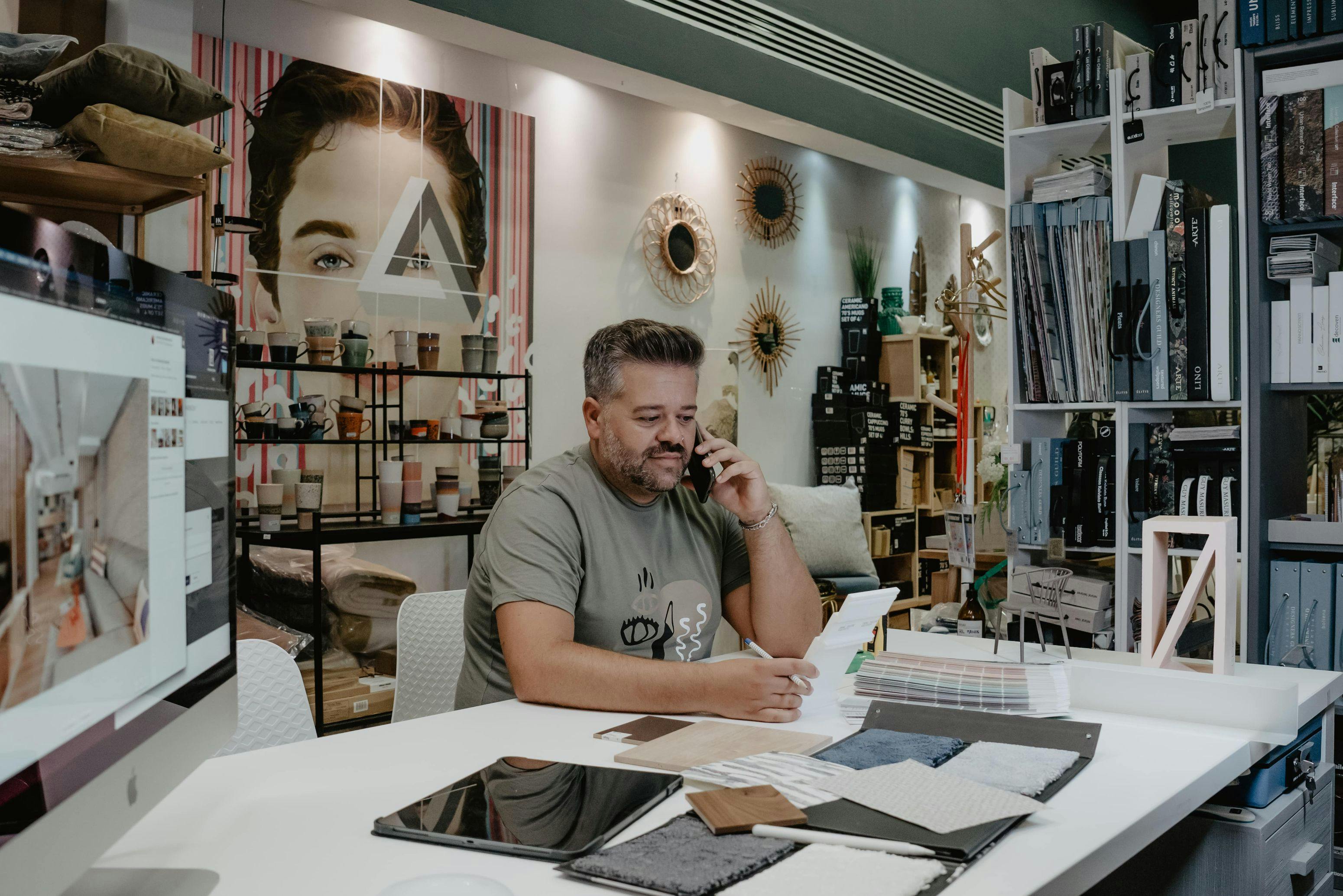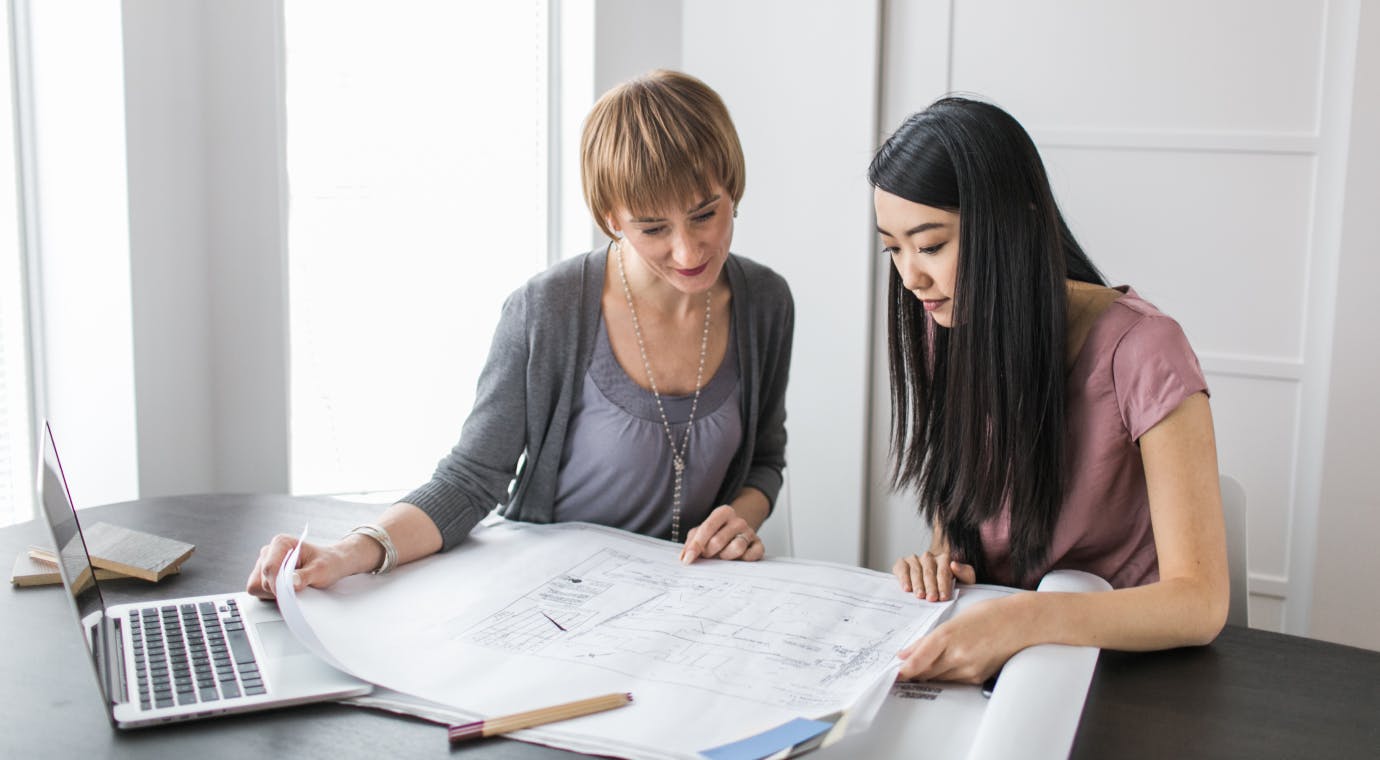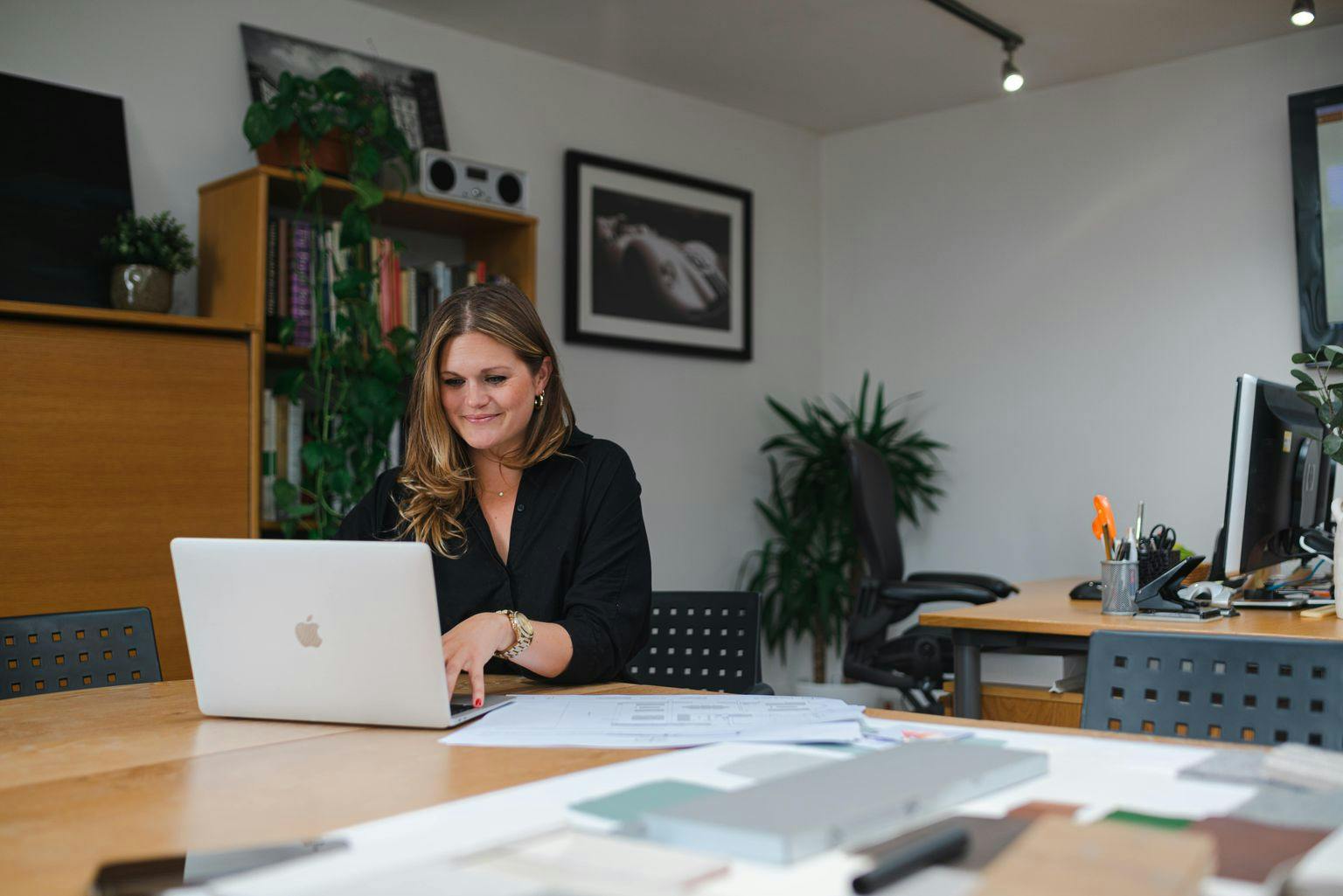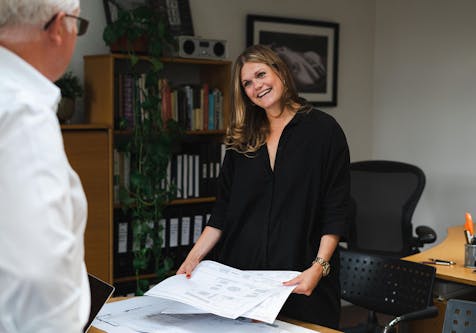How to Write a Business Plan for Interior Design
Writing a business plan is the first step in starting your own interior design firm. Find out How to Write a Business Plan for Interior Design from the experts at Houzz Pro.

As an interior designer, you know that every successful project needs a great plan. The same goes for your interior design business. Even if you’re just starting out with your design business, or if you’re revamping your current business model, knowing how to write an interior design business plan will guide you on your path to success and help move your business forward.
If you’ve never written a business plan before or need help fine tuning your current plan, it can be a bit overwhelming to know where to begin and what to include. Our guide will give you a comprehensive overview of how to write a business plan for interior design, including what an interior design business plan entails, why you need a great plan, which sections and information to incorporate, and last but not least, step-by-step details on how to write your business plan. Read on or click a link below to take the next step—and your business to the next level:

What is an interior design business plan?
An interior design business plan is a written document detailing what your business is all about, what you’d like to achieve and how. It’s an outline and guide of what your business offers, your operations and financial plan, your business goals and what you plan to do to accomplish them. No two interior design businesses or plans are alike—and that’s a great thing! Your interior design business plan will be entirely unique to you, your particular business market, specialities and what you desire to achieve.

Why are interior design business plans important?
Writing an interior design business plan is fundamental to creating a successful interior design business, or for revising the strategy and direction of your current business. It’s said that a dream without a goal is just a wish—and the same goes for your interior design business plan. “Generally speaking, creatives—specifically, interior designers—are very good at designing but don’t know how to run a business,” says designer Ann Ueno. “So their businesses fail within the first two to three years, or they’re not profitable.” A good business plan will help distinguish the strengths of your business and identify the potential pitfalls of certain decisions. Your plan will also help you know how you stand apart from your competitors and your strategy to compete in the market.
Not having a business plan can be a recipe for failure in your interior design business. External audiences—such as a potential business partner, or bank if you’ll be securing a loan—will want to review your business plan, so it’s important that you have one firmly in place. “I definitely believe the old Henry Ford adage of ‘Failing to plan is planning to fail,’” says Deana Duffek of Duffek Design & Development. Without a plan, you can easily lose focus, time and money by investing in the wrong areas without thinking them through, or miss out on opportunities when they arise. Your interior design business plan helps you stay on track with your vision, goals and how you will achieve them, so you’ll always know where you’re headed.

Components of an interior design business plan
Now that you know what an interior design business plan is and why it’s important, the next step in how to write an interior design business plan is knowing exactly what you need to include in your plan. This section will explain the essential components of your business plan and the necessary information that should be included in each one. While you may have additional areas you might need to incorporate that pertain to your particular business, the below are a great place to start and are fundamental for any business plan.
Executive summary
Your executive summary will give an overview of what your interior design business is about and how it will be successful. Here, you can include your mission statement, which describes the purpose and overarching goal of your business: what’s driving you to do what you do in serving your clients? When writing your interior design business plan, your executive summary will also include a brief description of your services. Do you offer commercial or residential design? Restoration or consultancy services? Be specific, but not overly detailed just yet. Lastly, you’ll also include basic information about your company’s ownership, the number of employees and types of roles you employ, your location, and high-level financial information.
Company overview
The company overview is where you’ll start to provide more detailed information about your interior design business. What are the interior design needs your business will address? What types of clients will you serve? What are the strengths of your business that help give you a competitive advantage in your particular market? Your company overview is where you can share all about “who” you are and what makes your company great.
Services
When you know the strengths and focus of your interior design business, it’s easier to know what types of services you’ll be offering. The services section is where you really get down to brass tacks describing exactly what you’ll be selling and providing to your clients.
Market analysis
Your interior design business plan needs to outline where it stands in the market, which will require some research and analysis. This section will include the latest information and trends about your industry, your target market, and who your competition is in your area, so you know how to make your business stand out.
Customer analysis
Your customer is unique to your business, the services you offer, and where your business is located. When writing your interior design business plan, get creative with this section when imaging your ideal customer. Who are they and what are their needs and pain points? How much do they earn and what are they likely to spend? Knowing your customer is essential to the success of your business, so be as detailed as possible with your customer analysis.
Marketing plan
When you know who your interior design customer is, you’re able to target them more precisely in the market. Take the knowledge you gained from your customer analysis and use it for your marketing plan. You’ll also want to share about the strengths and services you want to highlight in your marketing when writing your interior design business plan.
Operations plan
The operations plan section of your business plan will describe the physical operation needs of your interior design business and how you will keep your business successfully in motion. What is your physical location? What kind of equipment does your business use? What production systems, workflows and quality checks will you have in place? How many employees do you need to grow? Here you’ll also include information about your inventory needs for design materials and samples, as well as details about your suppliers.
Management plan
Your management plan talks about the people behind your business. Who runs the company? Who is on your management team and staff? You’ll also want to include the strengths of key players in your management team and company. If you’re a sole proprietor, then you can simply describe who you are, your background and the roles you’ll be playing in your business.
Financial plan
Your financial plan will be an important component when writing a business plan for interior design. Here’s where you’ll want to add as much detail as possible about your current financial picture, including financial statements and balance sheets, as well as future forecast projections.
Appendix
Lastly, the appendix of your business plan for interior design will include documents to support the details you provided in your plan. This can include resumes, licences, credit history, legal documents and more to help support the validity of your plan and back up your credibility.

How to write a business plan for interior design step-by-step
1. Pick a specialty
Narrow down your niche to stand out in the market
There’s a reason why people say “there are riches in niches.” Focusing on a specific niche for your interior design business will help you zero in on your customer and stand out amongst a smaller field of competitors. Here are just a few specialities to consider for your business:
- Residential interior design
- Corporate or commercial interior design
- Hospitality interior design
- Restaurant design
- Sustainable design
- Kitchen design
- Lighting design
- Set design
- Exhibit design
- Space planning consultant services
- Interior design consultancy
- Colour specialist
- Feng shui interior design
- And many more

2. Define services provided
Know exactly what you’re offering your clients
After you’ve selected your niche, you can now define the interior design services you’d like to provide your clients. Will you be providing designs only or full-service design, supply and installation? Will you focus on designing for certain rooms, such as the kitchen or bath? Will you offer remote and in-person consultations? Other considerations to make when selecting your services include: your particular strengths as a designer, what your clients in the market are desiring, what you’re capable of providing and what will contribute to your bottom line.

3. Determine pricing model
Choose an attractive pricing model for maximum profitability
Before determining your pricing model, you need to review your local market, current prices and what your competition is charging. From there you can choose from the following options for your pricing model:
- Hourly rate
- Flat fee per project
- By square meterage
- Cost plus (where the client pays the net value of furnishings and materials plus your markup)
- Retail (where the client pays the retail cost for items; your fee is the difference between the net and retail price)

4. Brainstorm marketing strategy
Questions to help define your strategy and target your customer
When forming your marketing strategy for your interior design business plan, go back to your market and customer analysis and ask yourself: who is my customer, what do they want and how can I stand out in the market? Here are a few more key items and questions to consider:
- How will you reach your customer? Which social media platforms are they using? Which websites do they visit? Is your customer more likely to respond to an email or should you market yourself at tradeshows?
- What is your marketing message? What does your customer need and what’s going to make them choose you?
- Lastly, you need to include how you’ll be managing your marketing campaigns. Will you be hiring an outside agency for your marketing? Will you be advertising yourself? What budget will you be allocating for marketing?
Interior designers surveyed by Houzz in 2022 reported that marketing and advertising comprised the second highest expense in starting their own business (second only to technology — more on this below). Knowing this will help you create and financially plan for a solid marketing strategy when writing your interior design business plan.

5. Brainstorm operations strategy
Know who and how you’ll manage your business
Here are key operations items you’ll need to consider for your interior design business plan:
- Facilities: Your business will need the right space to facilitate your operation and grow, so make sure to assess the physical needs your business requires now and in the long run. This can include everything from the size and layout of your workspace to the kinds of storage you might need for organising your interior design materials.
- Production system: Successful businesses have great systems in place. You’ll want to consider your standard operating procedures, as well as workflows for various aspects of your business (from onboarding a client to completing and invoicing for a project).
- Quality management: Managing the quality of your services is key to your business and reputation, so you need to put checks in place to make sure you’re continually reviewing your performance.
- Technology and resources: Assess the technology requirements of your business today and in the future. According to a survey conducted by Houzz in 2022, interior designers reported that technology costs were the No. 1 most expensive part of starting their own business. Today’s leading designers use technology to stand out from the competition, bring designs to life and keep their businesses organised. Every designer should prioritise technology that will help provide the best client experience, and thinking through those tech needs early on can help you budget for those expenses. You’ll also want to take into account your human resources and staff you’ll need, suppliers you’ll be working with, and the physical materials required including everything from design samples to office supplies.

6. Set financial goals
Create a plan to achieve your financial objectives
The main financial goal of any business is profitability. In order to be profitable your revenue must exceed your total expenses, so it’s important to keep this as a top financial goal to keep your business sustainable. After profitability, you’ll want to track your profit margins and compare them to your industry average. This will help you see where you may need to trim your expenses in order to maximise profit.
In the day-to-day operation of your business, healthy cash flow is another objective to maintain. This will help you know how much liquid cash you have to cover your basic operating expenses, or if you’ll need a loan or line of credit to float your business. The majority (63%) of interior designers surveyed by Houzz in 2022 used their own personal savings to get started, but your situation might be different. Learn more about the different ways to fund your interior design business.
When writing your interior design business plan, you’ll also want to consider bigger long-term financial goals you might have, such as expanding your workspace, hiring new employees and what steps you’ll need to take to accommodate this growth in your business.

Conclusion
Now you know how to write a business plan for interior design from start to finish, which will help keep your business on the path to success—now and in the long run. If you’d like to keep reading, check out How to Price Interior Design Services.






